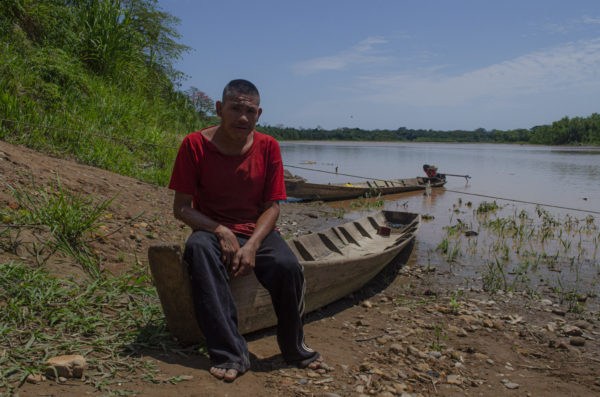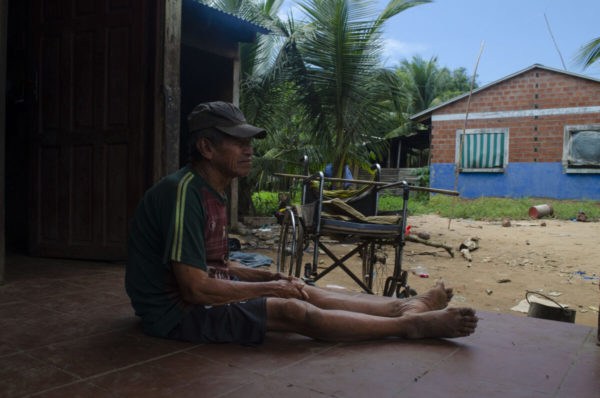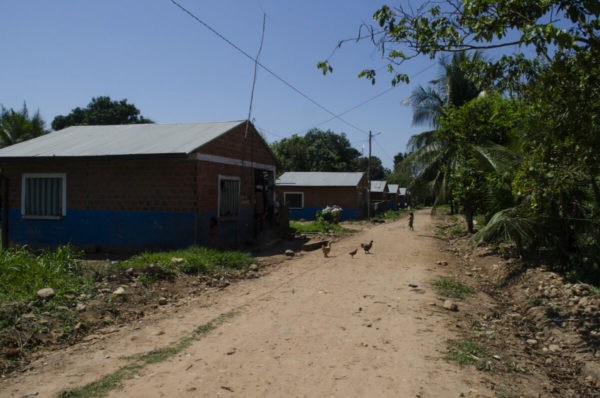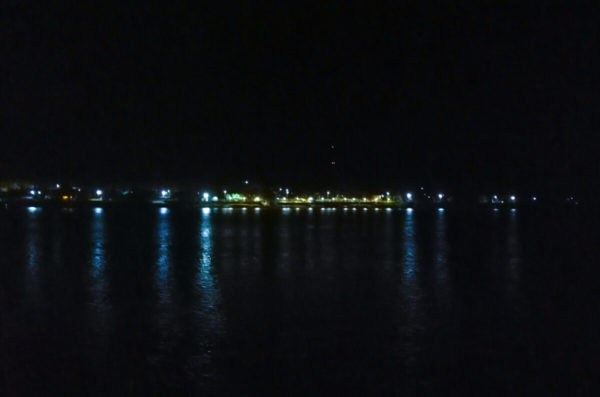Mercury from Mining Infects Bolivian Indigenous People

By Sergio Mendoza (IPS)
HAVANA TIMES – The intensity of the sun and the tranquility in this Amazonian community of Eyiyo Quibo in northern Bolivia, make time stand still. The site is full of people, although at times it seems empty, as many take refuge in their homes while we talk to the representative of the community under the shade of trees, among tired dogs and naked children.
The community authority speaks of the danger that flows down the river from the south that stalks the population. More than 100 kilometers from Eyiyo Quibo, gold is extracted with the help of one of the most toxic metals for humans: mercury.
“My wife says ‘If I’m sick, I’m sick, I‘m going to die of some disease anyway. I can’t stop eating.’ When this mining thing started she had more pain. Maybe it’s about eating fish. We didn’t have this problem before,” says Óscar Lurici, an important Eyiyo Quibo captain, an Esse Ejja community in the northern part of the department of La Paz, bordering the Beni River and the entrance to Madidi National Park.
The indigenous Esse Ejja, formerly nomadic, were always known as river people. The extensive riverbanks in northern Bolivia and southern Peru were their territory to come and go as they pleased. But that changed almost 30 years ago.
Forced by the surrounding sedentary culture, some of them settled in an eight-hectare area on the edge of the Beni River in the municipality of San Buenaventura. This is Eyiyo Quibo.

The Safe Limit
In early 2021, a group of researchers arrived in the community to find out if the use of mercury in gold mining upstream had any impact on the population.
The specialists took hair samples from women of reproductive age and were surprised by the high levels of methylmercury in their bodies. Methylmercury is a neurotoxic compound derived from mercury, which can be concentrated in the human body and acquired by the consumption of contaminated fish, among other things.
The “safe” limit for methylmercury in the human body is one part per million (1 ppm), but 94% of these indigenous women had methylmercury levels above that limit; one case even reached 32 ppm.
This study, by the International Pollutant Elimination Network (IPEN), was also done in Brazil, Venezuela and Colombia, but the case of Bolivia was the most concerning. “The levels of mercury in the body among women in this community are the highest ever found in this study,” was the conclusion last June.

Contaminated
Mercury is used to extract gold from the river. But as the Esse Ejja are not miners, they deduced that they were being contaminated by consuming fish, which in turn is contaminated by the waste that gold mining expels in the rivers.
With this level of contamination, there is a high risk of developing neurological, kidney, cognitive and motor dysfunction, blindness, speech disability, and brain damage, among other conditions. But the main concern is the damage that mercury in a pregnant woman can cause to the fetus.
“My nephew told me I’m going to get sick if I keep eating contaminated fish. I don’t know what that will be like, I just keep on eating,” says one woman, as she roasts plantains on firewood.
She prefers anonymity. They detected 9.1 ppm of mercury in her body. Like the rest of the interviewees in Eyiyo Quibo, she received the results with resignation; What can we do about it? They are aware that gold mining upstream will not stop because it is in the hands of allies of the Bolivian government. And they cannot stop consuming fish, as it is the basis of their diet.
In the towns of Mapiri, Teoponte, Guanay, Tipuani and others that are to the south, and whose rivers flow into the Beni River, the mining cooperatives operate with little or no government control, and they do so in conjunction with Chinese investments.
Among these fatalistic reflections a 58-year-old man remembers the past as being better. “Our parents went back and forth along the river. A year in one place and when they got tired of it, they would get into the canoe to go somewhere else. I was with them,” he says.
Then, there was an abundance of fish. Now, there are few fish in an increasingly polluted river.

Nobody knows anything
Standing next to the Beni River, on the outskirts of Rurrenabaque, Osmilder Bedregal – a fisherman and leader of his trade, as well as a businessman and heir to a famous restaurant – says that fishing has been reduced by up to 60% since he entered the field almost 20 years ago. He is now 45 and blames this decline on upstream mining, where mercury is used to facilitate gold collection without any monitoring.
On a visit to the Mayor’s Office of Rurrenabaque, an official close to the entrance door exclaims: “Man, we are so screwed with that! I don’t know if you know about the study that has just come out showing that the indigenous people here are contaminated by mercury. I don’t let my family eat fish. In a few years all those people will have cancer, and nobody says anything or knows anything. But let me take you to the person in charge.”
However, the Environment and Aggregates Unit had not heard about the study. The mayors of Rurrenabaque and San Buenaventura, Elías Moreno and Luis Alberto Alipaz, respectively, also did not know about the IPEN report that warns that the likelihood that mercury contamination in other towns surrounding the Beni River is similar.
The bad news also did not reach hospitals in both municipalities, where doctors report that the most frequent cases they treat are stomach infections. While they treated patients with symptoms that may be due to high mercury exposure, they are uncertain about it.
“People know about this contamination, but as long as it doesn’t kill them at the moment, or it doesn’t hurt them at the moment, they think it’s a lie,” explains Mayor Alipaz, who acknowledges that it is time to take action because the problem is growing.

Government has few answers
The representative of the National Coordinator for the Defense of Indigenous Territories, Native Peasants, and Protected Areas (CONTIACAP), Álex Villca —who accompanies this tour—, leads a tenacious fight against contamination from mining in northern Bolivia.
He recalls that since 2016 he began to hear about the consequences that gold mining would bring to the north of Bolivia.
In 2019, on a journey along the Kaka River, a tributary that flows into the Beni, he found 12 Chinese and Colombian dredges. By 2021, the number had risen to 60, Villca says.
And he warns: “Although this problem is obvious, there is no response from the competent authorities. Institutions appointed by law to do something about it are conspicuous by their absence.”
The head of the National Environmental Management Program of the Ministry of Health, Alfredo Laime, says he is aware of the situation and that it is being worked on. He believes that now, with this general study, they must intervene, although it is not a simple task.
“Bottom line, our struggle is to ban the use of mercury in mining,” he says, aware that other actors are involved in this decision. Among the main ones are the mining cooperatives of the north of La Paz, allies of the government who, in March of this year, opposed legislative attempts to control and reduce the use of mercury in gold mining.
The secretary general of the Regional Federation of Gold Mining Cooperatives of Northern La Paz, Rolando Zambrana, assures that his sector is open to replacing heavy metal with other substances or techniques for extracting gold that are less harmful to the environment and health. However, he admits that this replacement will not happen in the short-term.
In 2013, Bolivia signed the Minamata Convention, which urges signatory States to implement a National Plan of Action to reduce the use of mercury in their territories. Bolivia has not yet finalized its plan, because the Government has not allocated resources for this purpose.
Miroslava Castellón, head of the National Program of Persistent Organic Pollutants, under the Ministry of the Environment, explains that they are in the process of obtaining external financing to comply with this commitment. If all goes as expected, the plan to reduce mercury use should be implemented in 2025.

Powerlessness in the face of gold fever
“Do we just consume fish? There are hundreds of communities on the banks of the river. Some time ago, a mother wanted to kill her baby because she was frightened by her baby being born with a malformed head. Even more odd, there is a girl who can’t stand up. There were no such things before,” says Eyiyo Quibo leader Óscar Lurici, before taking us to an old man lying on the ground.
Ramuel Apolice, 70, was surrounded by his daughters and grandchildren, who disappeared as soon as they saw us, leaving him alone next to his wheelchair. What is visible are two bumps under his knees and his inability to move his legs, but the cause of this is unknown.
And neither in this case nor in any of the others mentioned by Lurici is it definite that the abnormalities are due to mercury contamination. The only thing certain is that the risk is present.
Across the river from Eyiyo Quibo is the island where the Esse Ejja used to live long ago in their constant nomadic trips along the Beni River. That was 30 years ago, before a foreigner bought the the land they now occupy, where in place of their houses made of stick and banana leaves, the government built them brick and cement ones, painted blue.
In one of these houses lives Elva Roca, 34, with 10 ppm of mercury in her body. Sitting on the sandy patio, she watches her naked children bathe in a pool of water. Resigned, she says: “We know that the fish become more infected because of the miners. We know that over time it will be worse. And only God knows what will happen, then.”
This article is part of the Planeta Community, a journalistic project led by Periodistas por el Planeta (PxP) in Latin America, of which IPS is a part.





